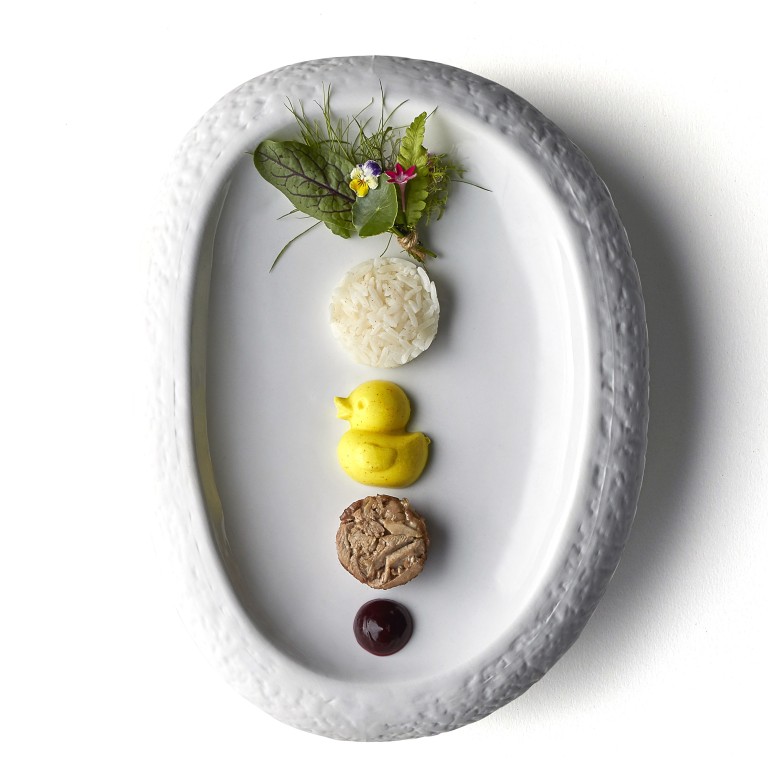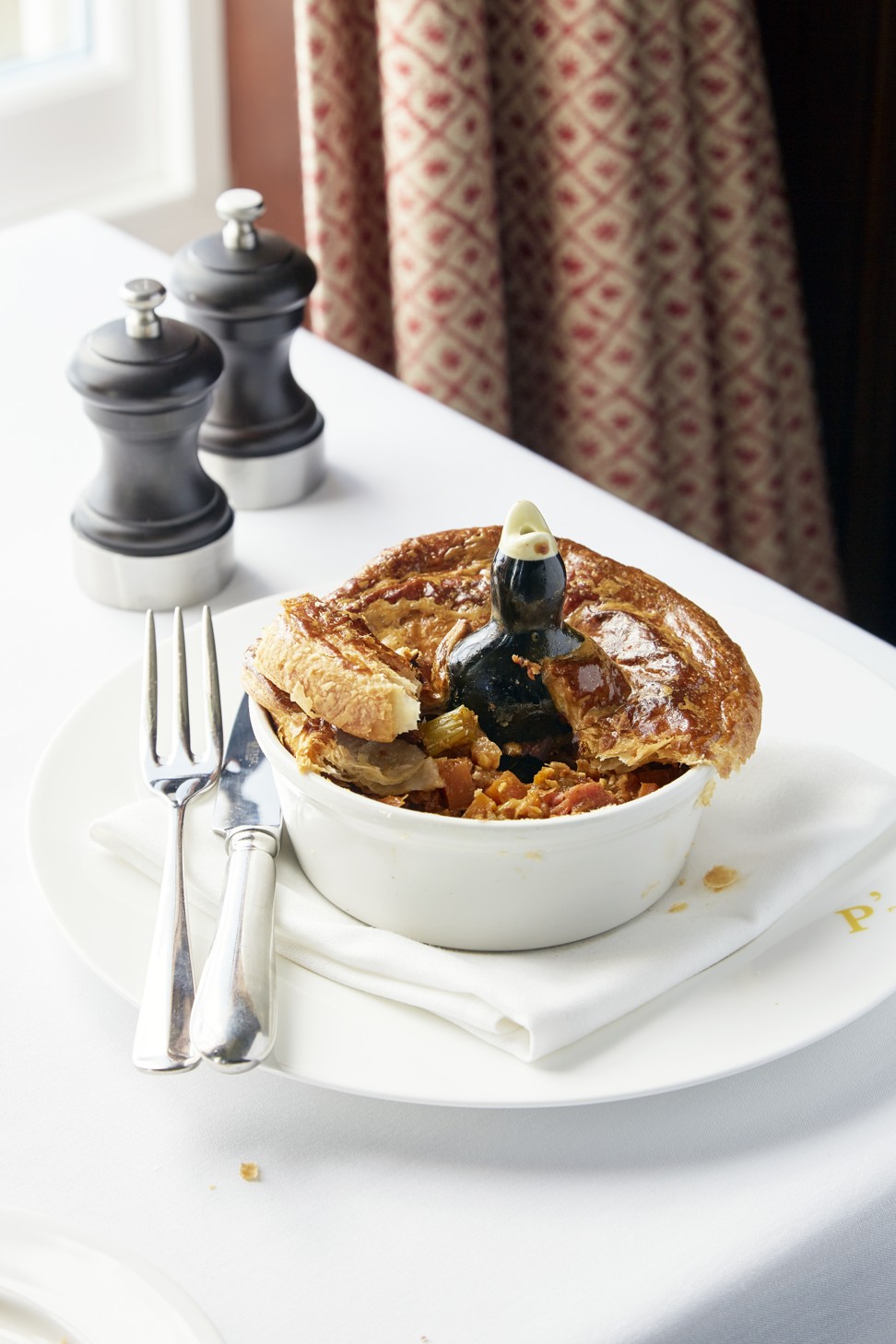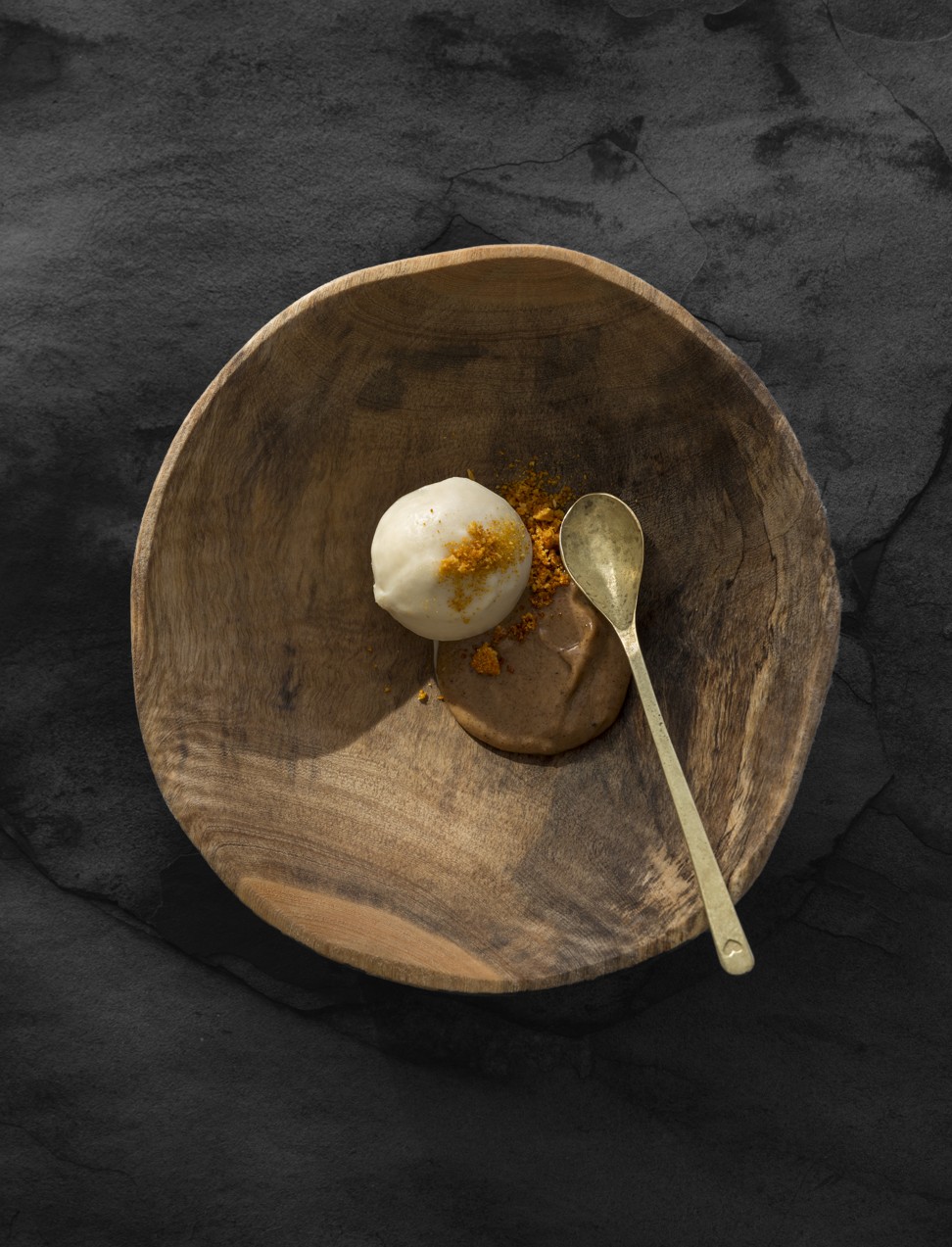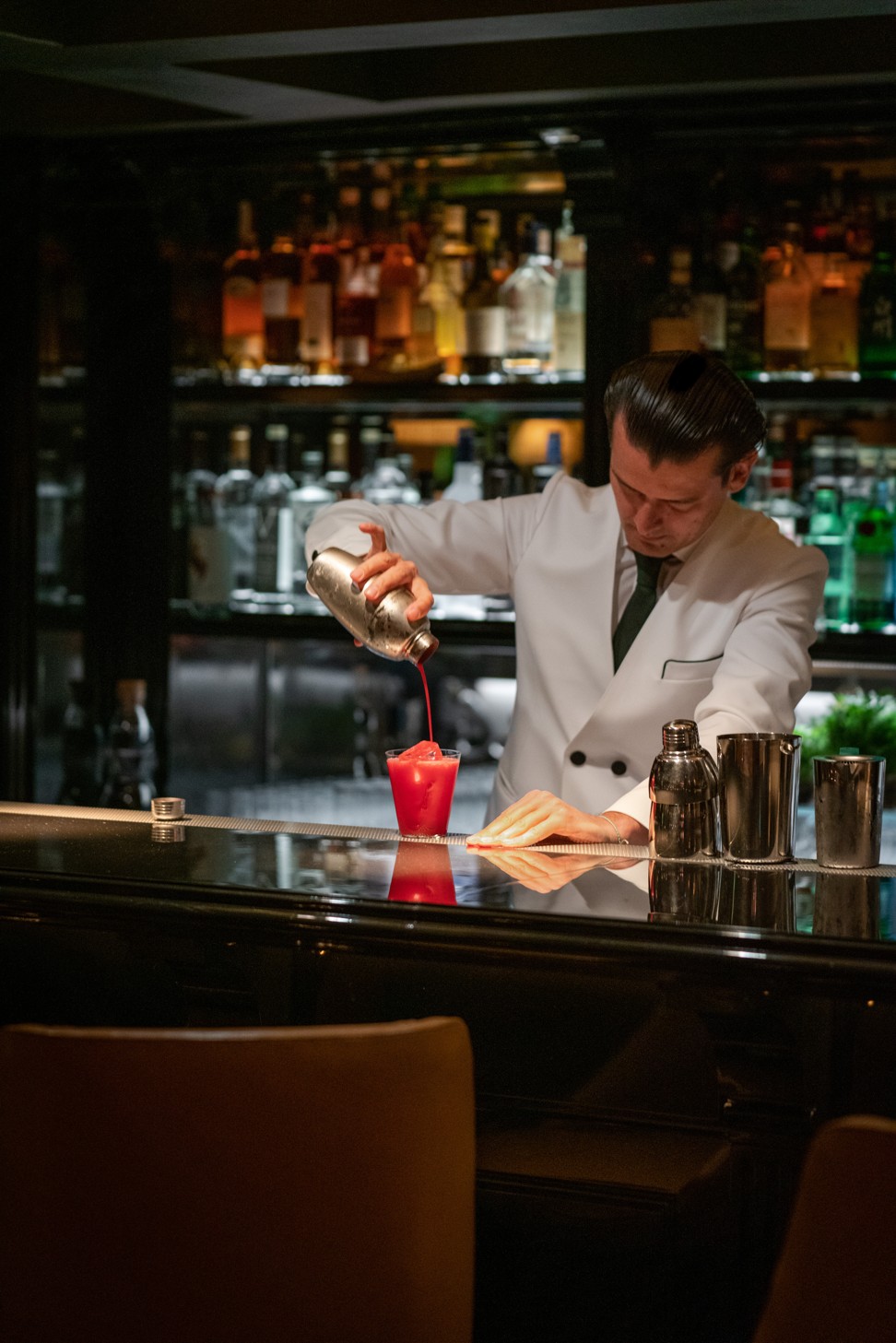Will Hong Kong restaurants stop importing Chinese produce and instead grow hyperlocal food?

At Wolfgat, the rustic 20-seater eatery that shot from obscurity to win 2019’s Restaurant of the Year in the World Restaurant Awards, chef-owner Kobus van der Merwe and his team start every day gathering ingredients from the surrounding landscape. The restaurant is located in the tiny fishing village of Paternoster – population 1,971 in the last census – on South Africa’s long and weather-beaten West Cape coast, giving the chefs access to both land and sea.
“Each course we serve contains locally picked wild herbs and succulents that we’ve sourced within a few kilometres’ radius,” says van der Merwe. “We pick plants and forage for shellfish endemic to this coast and that encapsulates the flavour of the coast and the season. Paternoster has no palm trees or tropical holiday beach vibes – we have special Strandveld vegetation here that you have to look at closely to notice and admire. I want to capture that and share that.”
The indigenous plant kiesieblaar is baked until crispy and is stacked it with raw yellowtail and pelargonium mayonnaise; angelfish is smoked with wild sage and presented with waterblommetjie (commonly known as Cape pond weed), limpet and lemon veloute; and sorghum porridge is served with wild dagga (of the mint family, known for its medicinal and mild psychoactive properties), beer ice cream and honeycomb.

“Being so strict with ingredients is limiting; it forces you to be creative,” explains van der Merwe. “We see it as a positive challenge. We’ve been open three years and we’re still learning and experimenting. We want to offer a sense of place that’s truly representative of the west coast.”
Obsessive attention to local ingredients has long been a global dining trend, brought to serious attention a decade ago by culinary greats such as Rene Redzepi. With his boundary-breaking Noma, Redzepi reinterprets Nordic cuisine with strictly local ingredients, many of which he harvests from wild pockets of land in his native Copenhagen.
Are zero-waste restaurants just a pipe dream?
Now, more chefs around the world are embracing the concept of hyperlocal – taking the ingredient sourcing process into their own hands by farming on-site, foraging or carefully sourcing from within a tight radius of a few kilometres. There are a lot of reasons to go hyperlocal; one is that chefs are able to give diners a taste of the unique culinary personality of highly specialised regions.
Marc Soper, executive chef at Wharekauhau luxury lodge in New Zealand, gives diners not only a taste of the region, but of his particular farm.
Wharekauhau is a sheep and cattle farm, with gardens that produce a huge variety of plants, from rhubarb and kaffir lime to carrots and kawakawa (New Zealand bush basil). He pickles kawakawa flower heads with cider vinegar, mirin, sake, salt and sugar and serves them with fish or pork knuckle sourced from local fishermen and farms.
At least 80 per cent of Soper’s ingredients come from the farm, or the one next door: “A farmer plants kale at the back of the farm, and sometimes he catches me in his paddocks picking leaves, or pulling up the turnips or swedes he is growing for his cows. We make a very nice swede purée,” he says. Soper also gets vegetables from film director James Cameron’s organic farm, which is about 10 minutes away – but only when he does not have enough of his own.
“You know generally what’s going to happen each season, but the environment is always changing so you never know when exactly something is going to be ready or how much you’re going to have. We try to use every ingredient opportunity, and base everything in the kitchen on what we have rather than an attitude of ‘that’s something new, let’s go and find the product’,” he says. “I want to tell the story of this farm, put the story of this lodge on the plate.”
We pick plants and forage for shellfish that is endemic to West Cape coast and that encapsulates the flavour of the coast and the season
The story includes ingredients he forages almost every day from mossy banks and unruly hedgerows between sheep fields. “We’re lucky with the amount of stuff we have here. It’s a food paradise,” he says.

Did you know that Gucci is entirely carbon-neutral?
Wild-growing watercress, chickweed, stinging nettles, pine needles and wild coastal spinach all end up in the pot. He pickles lichen, or tree moss, and serves it in a salad with chopped pear, or boils it down in sugar syrup, dehydrates it and uses it as a garnish: “It’s bitter, so you wouldn’t sit down and have a whole plate of lichen, but just a little on certain things does really nicely.”
The hyperlocal concept is also being increasingly embraced by restaurants in world cities, with chefs making the most of urban spaces. At the neo-Indian eatery Haoma in Bangkok, which claims to be the first urban farm and zero-waste restaurant in Thailand, diners sit among stacked platforms of growing beds and vertical gardens. The restaurant also farms its own fish in a large koi pond that stretches the length of the building. In an aquaponic system, the waste from the fish is used to deliver nutrients to plants such as mint, mizuna (Japanese mustard greens), borage and dill.
Chefs in many other metropolises are growing their own produce: Dublin-born chef Robin Gill and his wife, Sarah, have their own rooftop garden, along with four beehives, at The Dairy in Clapham, London.
De Kas in Amsterdam, which is run by chef Gert-Jan Hageman, has a much bigger undertaking, cultivating more than 100 different types of vegetables, herbs and fruit and serving them up to guests inside an eight-metre-tall glass greenhouse.
Hong Kong has its own burgeoning movement in urban vegetable gardening, complementing rurally located restaurants that have their own gardens, such as chef Margaret Xu Yuan’s Yin Yang Coastal in Tsuen Wan and O Veg in Yuen Long.
The vast majority of food in Hong Kong is imported, mainly from the mainland, and well-publicised incidents of food contamination are inspiring restaurateurs to grow their own. As Hong Kong’s rooftop space outweighs its total arable land, urban space has great potential, and chefs are claiming as much indoor and outdoor space they can find.
The Fringe Club grows everything from tomatoes and aubergines to salad greens on its rooftop for its bar and restaurant below, while Sohofama in PMQ has a “mini farm” of planting pots and trolleys in its outdoor courtyard.
Having hyperlocal ingredients ensures freshness and gives chefs more control over quality and taste.
5 rooftop restaurants in KL that take fine dining sky-high
“The enjoyment of going to the garden, pulling up a carrot, washing the dirt off and eating it is amazing,” says Craig Martin, executive chef at Annandale Coastal Farm Escape & Luxury Villa Collection on Banks Peninsula in New Zealand. “And the taste! The difference between supermarket produce and the vegetables and fruit we grow here is wonderful.”
The concept of hyperlocal is inextricably linked to sustainability, reducing the need to transport fresh supplies, making it food metres rather than food miles. But sustainability encompasses more than this.

Which Hong Kong restaurants define eating out this past decade?
Tristan Welch, chef director at the modern British brasserie Parker’s Tavern in Cambridge, the United Kingdom, has a hyperlocal mindset when it comes to the workings of his restaurant.
“Sustainability, for me, means not just where we get our ingredients, how far they travel, how they are packaged, and the wastage trail – it’s all that plus buying whole carcasses, and training the team to butcher them so they have the skills to pass on,” he says.
“We need to inspire our team or we won’t have restaurants to go to in the future, and have a restaurant at the right pay point, that can pay its staff – this is sustainability, too. We take a holistic point of view.”
Similar concerns inspire van der Merwe, with Wolfgat being an expression of its close environment. All the members of his team are Paternoster locals – many of them from fishing families who have never worked in a restaurant before – who trained on the job.
“We all cook, we all serve. We all learn from one another and grow as a team.
Over the long hours together, we have become a family,” says van der Merwe. “By keeping Wolfgat small, we keep it sustainable. We won’t be expanding any time soon.”
Something to cheer about

The move to hyperlocal – growing your own produce or foraging or sourcing ingredients within a very tight radius – is not only sweeping the global dining world, it is also impacting bartending: Erik Lorincz, who led The American Bar in London’s The Savoy hotel to win the World’s Best Bar title in 2017, grows three-quarters of his garnishes behind the bar at his new Mayfair establishment, Kwãnt.
In what looks like a back-bar fridge, he grows a number of leafy plants, including shiso and Mexican marigold, from which he also makes cordials.
“We have full control on herb quality – the herbs we grow taste delicious, and are 100 per cent organic – and we reduce waste,” says Lorincz. “If we order cut herbs, we have to use them in two or three days. But growing our own we use as much as we need, and the rest keeps growing.”
5 films and TV shows almost certain to make you turn vegan
Lorincz uses Evogro, a state-of-the-art LED lighting and hydroponics system that engages environmental sensors and smart cloud software to monitor and manage the health of the plants. Evogro provides the soil – coconut husks and volcanic soils – and the seeds. There is a camera in the unit, and sensors send automated emails to the bar if things are not running smoothly.
Lorincz controls the system on an app.
The Evogro system is being embraced by other establishments, mainly restaurants and hotels, such as Claridge’s and The Ritz London. Roganic Hong Kong in Causeway Bay uses a substantial Evogro system mainly for its food service, but the freshly grown herbs also end up in drinks and cocktails. “The big units wouldn’t fit in my bar, but this smaller system is right here, behind me. My team and I can get our herbs in seconds instead of running to the cellar,” says Lorincz. “It also looks nice for our guests, garnishing with literally freshly picked herbs.”
Want more stories like this? Sign up here. Follow STYLE on Facebook, Instagram, YouTube and Twitter .

Hong Kong has a burgeoning movement in urban vegetable gardening, complementing rurally located restaurants that have their own gardens